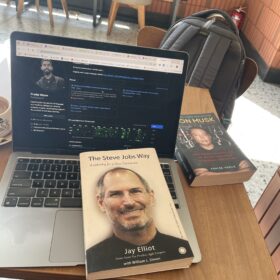Day 3: Exploring Frontier LLMs and Their End-User Interfaces
The field of large language models (LLMs) continues to grow at an astonishing pace, with cutting-edge innovations coming from tech giants and AI-first companies. Today, we explore some of the most prominent frontier LLMs, their unique user interfaces, remarkable capabilities, and nuanced limitations. Let’s also compare how they perform across different domains, shedding light on their strengths and areas for improvement.
Frontier LLMs and Their End-User Interfaces
Here’s a quick overview of the leading LLMs and the user experiences they offer:
OpenAI
Model: GPT-4 (used in ChatGPT)
UI: ChatGPT, available in both free and pro versions.
Anthropic
Models: Claude
UI: Chat Claude, designed for seamless interactions and safety-focused outputs.
Google
Models: Gemini family (e.g., Gemini Advanced)
UI: Gemini Chat, embedded into tools like Google Bard and Google Workspace apps.
Cohere
Models: Command R+ for generating text and Command Chat for conversational AI.
UI: Specialized APIs for businesses and developers.
Meta
Models: Llama family
UI: Accessible via platforms like Meta.ai, designed for research and commercial applications.
Perplexity
Models: Perplexity LLM
UI: Combines search and conversational capabilities, acting as a sophisticated search engine.
Mind-Blowing Performance of Frontier LLMs
Frontier LLMs have redefined what AI can achieve, with capabilities that feel almost magical. Here are some of the standout use cases:
- Synthesizing Information
LLMs excel at answering complex questions with structured, well-researched, and detailed responses. Whether it’s summarizing dense academic papers or outlining a multi-step business strategy, these models deliver nuanced answers that often include concise summaries. - Fleshing Out Ideas
From a couple of bullet points, these models can draft beautifully crafted emails, compelling blog posts, or detailed project outlines. They iterate with you until the final product is just right. - Coding Excellence
Their ability to write, debug, and optimize code has revolutionized how engineers work. These models have overtaken traditional resources like Stack Overflow for coding solutions and recommendations.
Limitations of Frontier Models
While impressive, these LLMs are not without their quirks and blind spots:
Specialized Domains: Although improving rapidly, LLMs are not yet at PhD-level expertise in specialized fields like quantum physics or niche subfields of medicine.
Recent Events: They have limited knowledge of events or developments beyond their training cut-off date. For example, a model trained in 2023 may lack details about advancements in 2024.
Oops Moments: Sometimes, LLMs can confidently present incorrect information due to blind spots in their training data or limitations in reasoning capabilities.
Let’s Put Them to the Test
To better understand the nuances of these models, we posed the following prompts and analyzed the results:
- “How do I decide if a business problem is suitable for an LLM solution?”
Models like GPT-4 and Claude delivered structured frameworks, emphasizing the need for clear problem definitions, data availability, and cost-benefit analysis. Gemini and Perplexity added helpful nuances, such as evaluating scalability and ethical implications. - “Compared with other frontier LLMs, what kinds of questions are you best at answering, and what kinds of questions do you find most challenging?”
GPT-4 highlighted its versatility but admitted challenges in handling real-time updates. Claude’s responses were safety-focused, concise, and often humorous, while Gemini showed its prowess in handling technical prompts. Perplexity excelled at blending conversational AI with search functionality. - “What does it feel like to be jealous?”
Emotional and philosophical prompts revealed unique model personalities. Claude’s answers were empathetic and poetic, while GPT-4 and Gemini offered analytical takes. This category highlighted the models’ varying degrees of emotional intelligence. - “How many times does the letter ‘a’ appear in this sentence?”
Surprisingly, even simple prompts like this one exposed differences. While most models got it right, occasional errors revealed small inconsistencies in text parsing.
Evaluating Meta AI and Perplexity
Meta’s Llama models and Perplexity’s hybrid search-chat approach offer unique outputs. Llama often excels in research-heavy contexts, while Perplexity shines in blending AI responses with up-to-date search results. For creative and technical tasks, their capabilities complement the strengths of GPT-4, Claude, and Gemini.
The LLM Leadership Challenge: Evaluating AI Through Creative Prompts
Creative prompts remain one of the best ways to push these models to their limits. Tasks like generating poetry, solving logic puzzles, or simulating expert-level debates reveal their true potential and highlight areas for improvement. Testing LLMs across diverse scenarios ensures continuous innovation in both capabilities and user experiences.
In Conclusion
All six frontier LLMs—GPT-4, Claude, Gemini, Command R+, Llama, and Perplexity—are shockingly good. Their ability to synthesize information, generate nuanced answers, and assist with creative or technical tasks is revolutionary.
Claude often stands out for its humor, safety-first design, and concise responses, making it a favorite among practitioners.
Price may soon become a key differentiator as these models converge in capabilities, with innovations increasingly focused on delivering lower-cost variants.
The era of frontier LLMs is here, and their performance continues to blow our minds. As the competition heats up, one thing is clear: the future of AI is brighter, smarter, and more accessible than ever.
What are your experiences with these frontier LLMs? Share your thoughts and let’s discuss the future of AI together!

